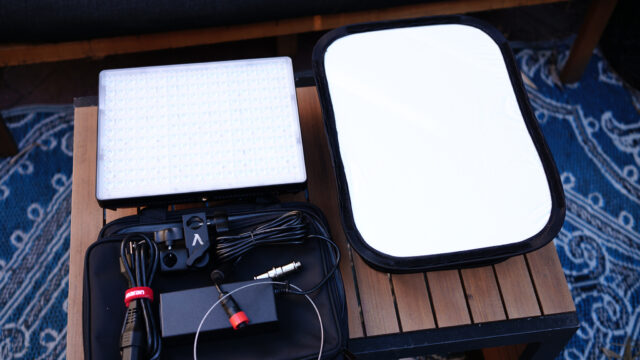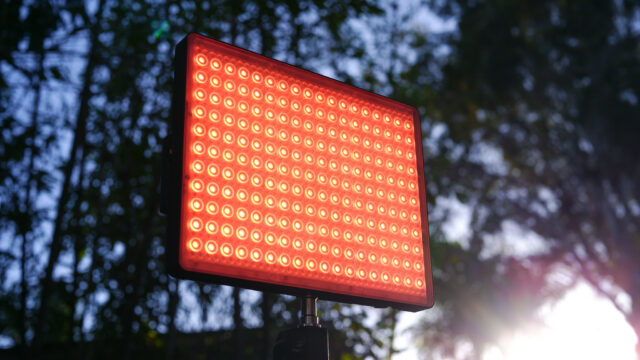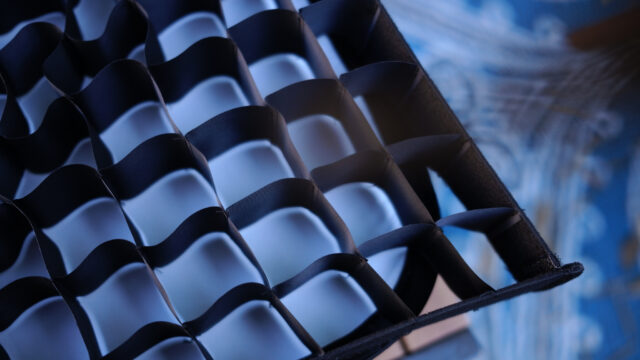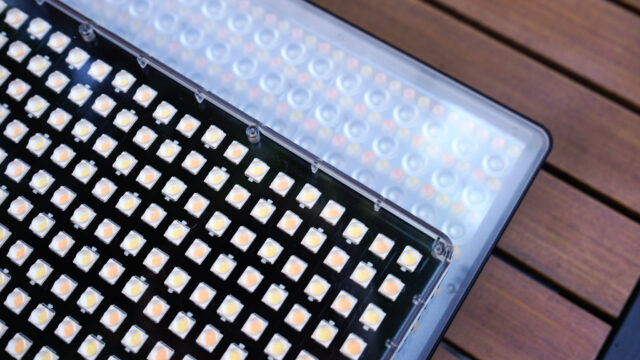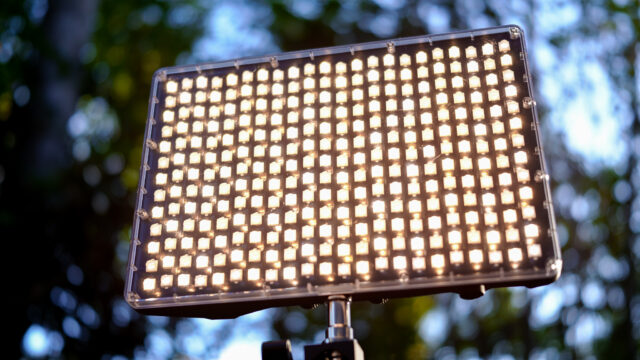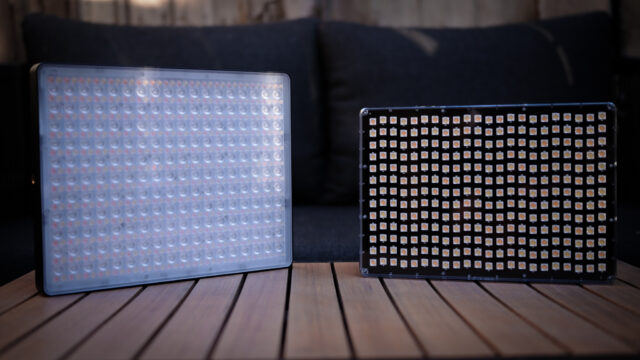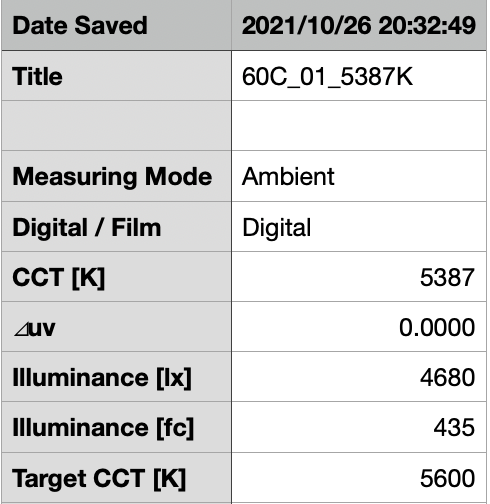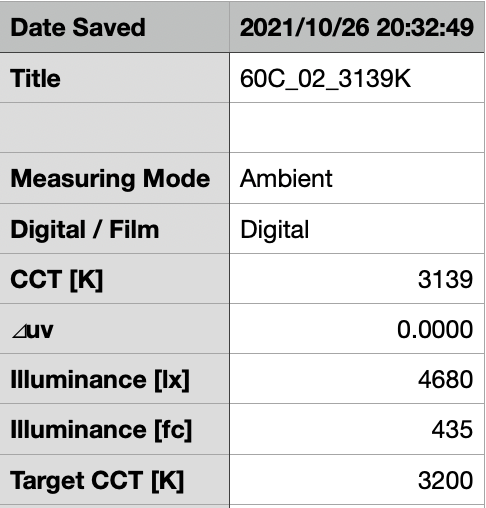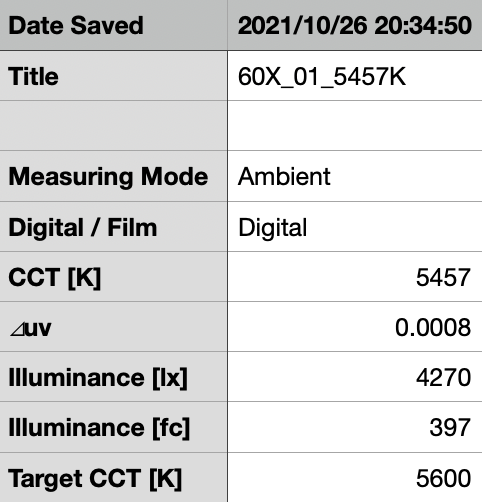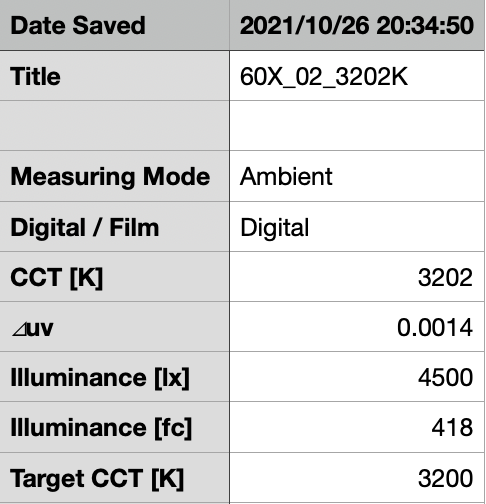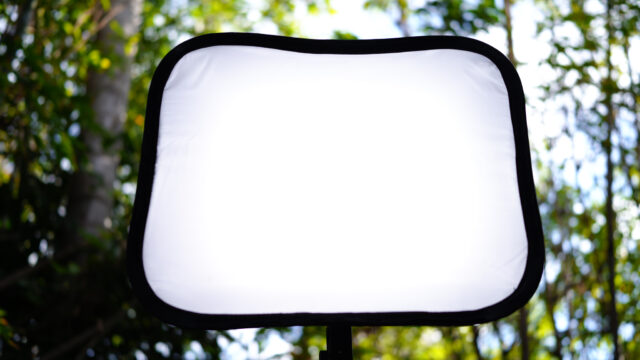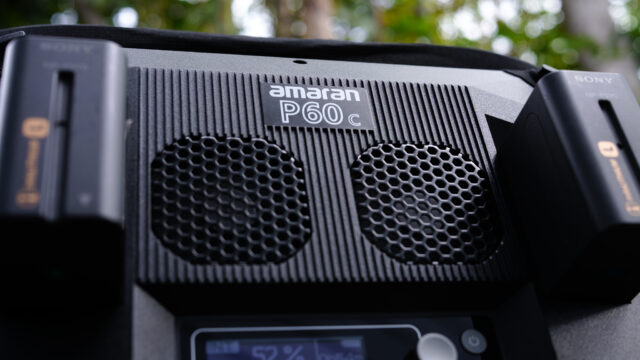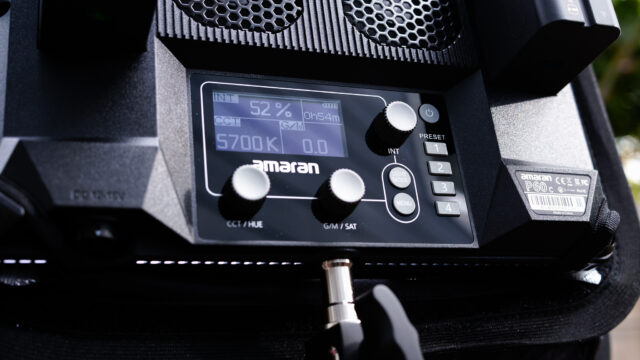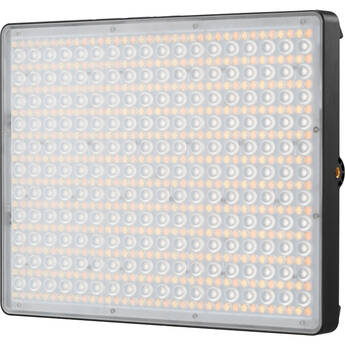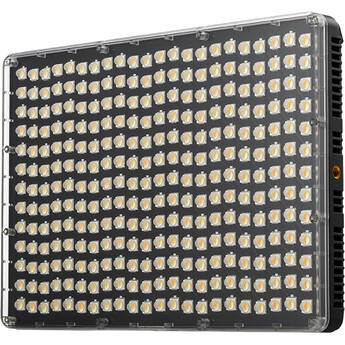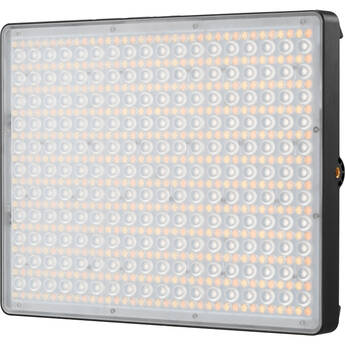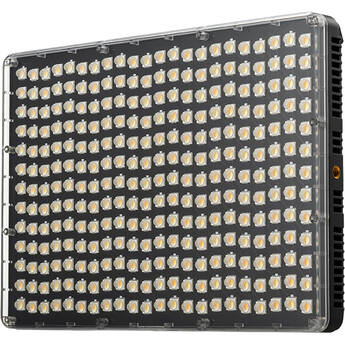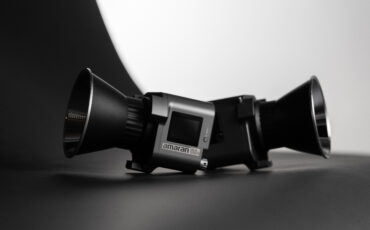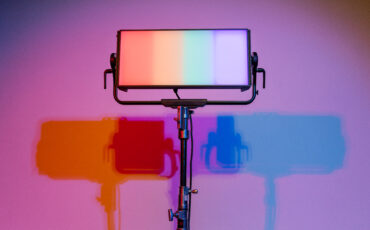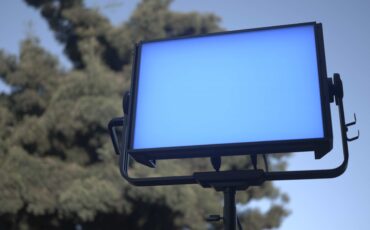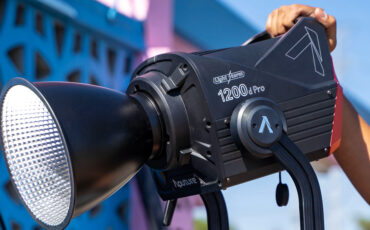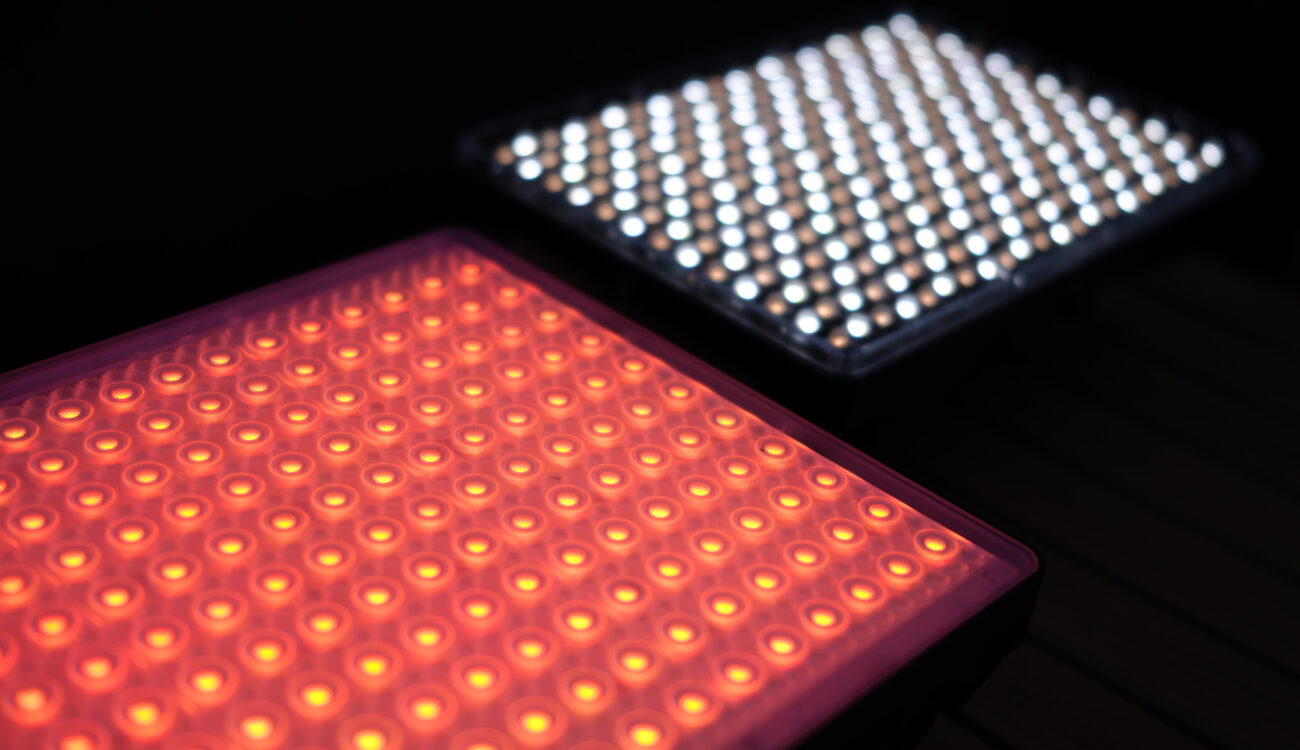
After being recently announced, the Aputure amaran P60c and P60x are already shipping (alongside two new amaran COB fixtures), and I’ve had a chance to review both over the last several weeks. There are always tradeoffs for lower-cost products –especially in the lighting category– so do the P60c and x fixtures nail that delicate balance between cost and performance? Keep on reading to find out.
In my mind, for better or worse, the Aputure brand has always been on the more affordable side when compared to other older industry staples like ARRI or Litepanels. So, when approaching this review, I was already curious about the budget category for a brand like Aputure that, along with their Light Storm and Nova product lines, I consider budget-conscious alternatives.
There’s absolutely a stigma around budget options in filmmaking. Perhaps a given product isn’t high enough cost to justify the day-rate fee for the owner, or maybe there are just better alternatives well ingrained into the rental system in your particular media market. Or, an item might be of such low cost that in some minds, it just can’t be as good as a more expensive product. You get my point.
The amaran series isn’t intended to garner a hefty kit fee or become a rental item, and that’s just fine. It’s meant for at-home content creators, students, and one-person bands or filmmakers traveling light on a budget. The plastic build of both the P60c and the P60x and power consumption by the more affordable NP-F batteries reflect that design philosophy. Honestly, I don’t drop (knock on wood) or even rent my lights out that much so, for me, I’m not too worried about the build quality of the amaran series and feature set. CRI and output matter much more to me. In that latter feature department, there’s much to like here.
ARRI Lighting Systems Control
amaran P60c
The amaran P60c isn’t the first low-cost color-capable light aimed at filmmakers on the market, but it is a first in terms of form factor from a brand that I’ve grown to trust since their MK 2 generation of fixtures started hitting the market a few years back. So, for me, the trend towards innovation in their lower-cost amaran series is a welcome move. That is, as long as Aputure continues to support more “pro” folks with their Nova P600c and LS1200.
At $349 for the P60c, you’re getting a fairly complete kit that includes grid, soft case, stand mount, power cables (not D-Tap), and a basic softbox (one built-in diffusion option).
It’s worth pointing out that the dimensions of the P60c are dramatically different from the P60x version, which means there isn’t any cross-compatibility between accessories. I wish the dimensions had been the same, but a glance at the rear of the P60c shows two active fans versus only one on the P60x version. This says to me on the “c” version, more real estate is needed for cooling.
A surprising amount of the internal features you’ve come to expect from the Nova series are present in the P60c. This includes specialty effects like paparazzi, Cop Car, etc. However, unlike with the Nova P600c, no individually controlled light engine zones are included. CCT mode in the P60c allows adjustment of your kelvin temp between 2500K and 7500K. HSI mode gives you a wide variety of color options, and a gel library helps you match some of the gels you may use more often. For example, Urban Sodium.
All of this is controllable by using the rear display panel or via the often-updated Sidus Link app — no wired or wireless DMX here. If you’re interested in DMX control, you’ll need to move to more premium-cost fixtures from Aputure.
I’ll be frank. The included accessories like the grid, softbox, and soft case aren’t my favorite part of this kit. The grid doesn’t come flush to the edges of the softbox (see image below), and the softbox itself only includes one built-in diffusion type and took some strength on my part to install as the last loop mounting the softbox to the light was stiff.
Oddly, the included soft case doesn’t have room for the grid to fit and will require another case to transport. The soft box itself does work to soften the light, breaks down quickly, and the four hinges that allow it to pop up (a potential failure point) don’t seem flimsy at all. I’m being picky about the accessories here, but at $349, I would expect both these fixtures to not include any accessories at all, and the fact that we get a variety feels like a bonus.
There’s also a hinge stand mount included that allows for basic tilting on a C-Stand or light stand. It does work, but I’m a little worried that over time, I’ll strip the 1/4″-20 threads at the base of the fixture. I would personally prefer a yoke mount for this type of light. Beyond the base 1/4″- 20 threads, there are also threads on the side of the fixture for additional mounting options. This stand adapter with umbrella holder seems to be a holdover from the days of the Aputure amaran Tri-8, and there’s some room for improvement here given just how fantastic the ballast stand adapter is that ships with the LS 600d/x.
You’ll notice the “c” version also has a small piece of plastic diffusion over the light that doubles as a light protector, while the “x” version is clear. The image above shows the view you’ll get of the placement of the LED diodes. It seems like Aputure has dropped the more chaotic diode placement in the amaran Tri-8 in favor of slightly irregular rows.
amaran P60x
At $249 each, the amaran 60x isn’t drastically cheaper than the P60c, so right off the bat, you have to ask yourself if it wouldn’t be worth it to pay the $100 more for more colors and effects offered by the P60c. It’s a consideration, but I personally don’t find that I use tons of colors in my work, and you might be the same. The 3200K to 6500K range that the P60x provides is helpful in most scenarios I find myself in.
As a DP, I find keeping track of dozens of small pieces of gel annoying, and going forward, there’s something attractive about using only digital gel pre-sets. Keep in mind that different fixtures do different things well and there is no single perfect light. Most often, I find myself in the strongest possible position with my personal kit when I’ve made the effort to diversify and have an array of lighting tools to turn to.
As mentioned earlier, the P60x is smaller than the P60c, and that smaller size might make the P60x more attractive for some users. You could easily fit a P60x 3-light kit (coming soon, I’m told) on a plane, and storing an entire interview lighting package in the overhead bin of a plane might be a plus for some solo operators.
The developers really nailed the rear control panels for both of these fixtures, but especially with the P60x. That menu takes no time to navigate. You can create custom button pre-sets with the P60c but know that’s not possible in the P60x. Saving time overall is the UI in the most recent Aputure light menu which keeps getting better and better.
The Sidus Link app is another easy way to control both fixtures. I’ve started to use the app more and more as I’ve dug into its feature set and learned to trust that the Bluetooth connection won’t randomly drop and lose settings mid-shot. As with anything, give yourself an opportunity at home to practice with the Sidus Link app before digging into it in the middle of a setup on location for the first time.
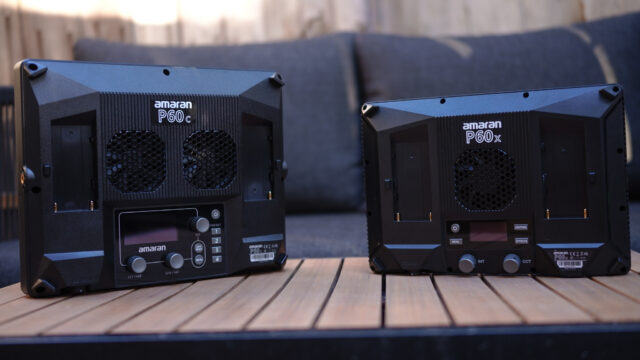
Overall Output and Color Temperature Readings
I grabbed a few measurements on my Sekonic C-700U Spectrometer (now updated with the C-800U) to see how accurately the amaran P60c handled color temp (kelvin) and output (lx) from a distance of 3 ft. Here are my readings with a target of 5600K and output set to 100%. I had no accessories attached for any of these readings.
A reading of 5387K with a target of 5600K is good and well within a normal range. Here’s a measurement from the P60c with a target of 3200K – again without accessories and with output set to 100%.
A reading of 3139K with a target of 3200K is excellent and even a little closer compared with my daylight readings. Here is the amaran P60x with a target of 5600K.
Again, very accurate results for the daylight 5600K target on the P60x and we landed at 5457K when reading at 3 feet. The output [lx] with the P60x is slightly less when comparing the daylight measurements on the P60c, but not dramatically so.
A reading of 3202K with a target of 3200K is fantastic and one of the closest kelvin readings I’ve ever seen with any fixture during testing. We also see a slight bump in output at this kelvin setting and we get closest to the P60c in output when the P60x is near the Tungsten side of its range.
Overall these are very, very impressive results for such affordable lighting fixtures.
The Wrap-Up
My approach is to own a medium amount of gear. Let me explain. Own too much, and you risk getting left behind. As technology evolves, much of that kit may be obsolete with the result you won’t make your money back. Own too little, and sometimes you’ll miss out on the financial benefits of a kit fee for a simple shoot where renting is costly or time prohibitive.
Aputure has already announced they’re continuing to expand the amaran line with the upcoming COB 60x and 60d — which should provide some useful and low-cost options for hard light at an affordable price.
For me, both 60W amaran lights are a sound owner/op investment. You can trust others won’t damage them, and you won’t break your back bringing them from location to location. Plus, you can always rent the more expensive Light Storm or Nova lights and still stay in the Aputure wireless ecosystem for controlling all your fixtures. Whether you decide to go with a P60c or P60x or mix and match, the barrier to entry for using high-quality filmmaking tools has never been lower.
What do you think? Will you be adding the P60c or P60x to your kit? Let us know in the comments below!



